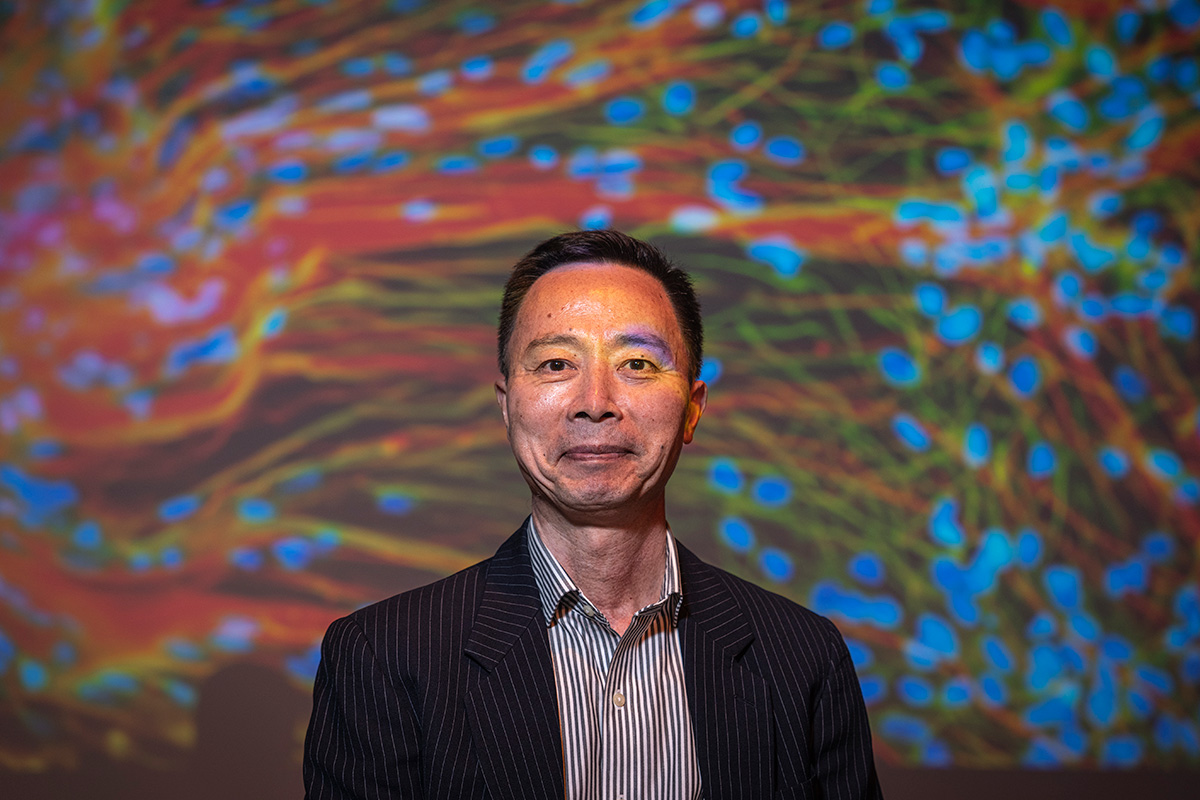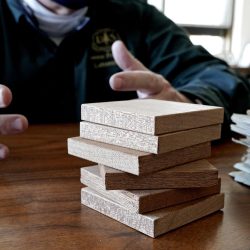How to Print a Brain
A UW breakthrough could help treat disorders, says Su-Chun Zhang PhD’91.

Zhang: “This could be a hugely powerful model to help us understand how brain cells and parts of the brain communicate in humans.” Andy Manis
A team of UW–Madison scientists has developed the first 3D-printed brain tissue that can grow and function like typical brain tissue. It’s an achievement with important implications for scientists studying the brain and working on treatments for a broad range of neurological and neurodevelopmental disorders, such as Alzheimer’s and Parkinson’s diseases.
“This could be a hugely powerful model to help us understand how brain cells and parts of the brain communicate in humans,” says Su-Chun Zhang PhD’91, professor of neuroscience and neurology at the UW Waisman Center. “It could change the way we look at stem cell biology, neuroscience, and the pathogenesis of many neurological and psychiatric disorders.”
Printing methods have limited the success of previous attempts to print brain tissue. Among other innovations, the UW researchers situated brain cells — neurons grown from induced pluripotent stem cells — in a softer gel than in previous attempts.
The printed cells form connections inside each printed layer as well as across layers, creating networks comparable to human brains. The neurons communicate, send signals, and interact with each other through neurotransmitters.
“Because we can print the tissue by design, we can have a defined system to look at how our human brain network operates,” Zhang says. “We can look very specifically at how the nerve cells talk to each other under certain conditions.”
The printed brain tissue could be used to study new drug candidates, brain growth, signaling between cells in Down syndrome, and interactions between healthy tissue and neighboring tissue affected by Alzheimer’s.
Published in the Summer 2024 issue



Comments
No comments posted yet.